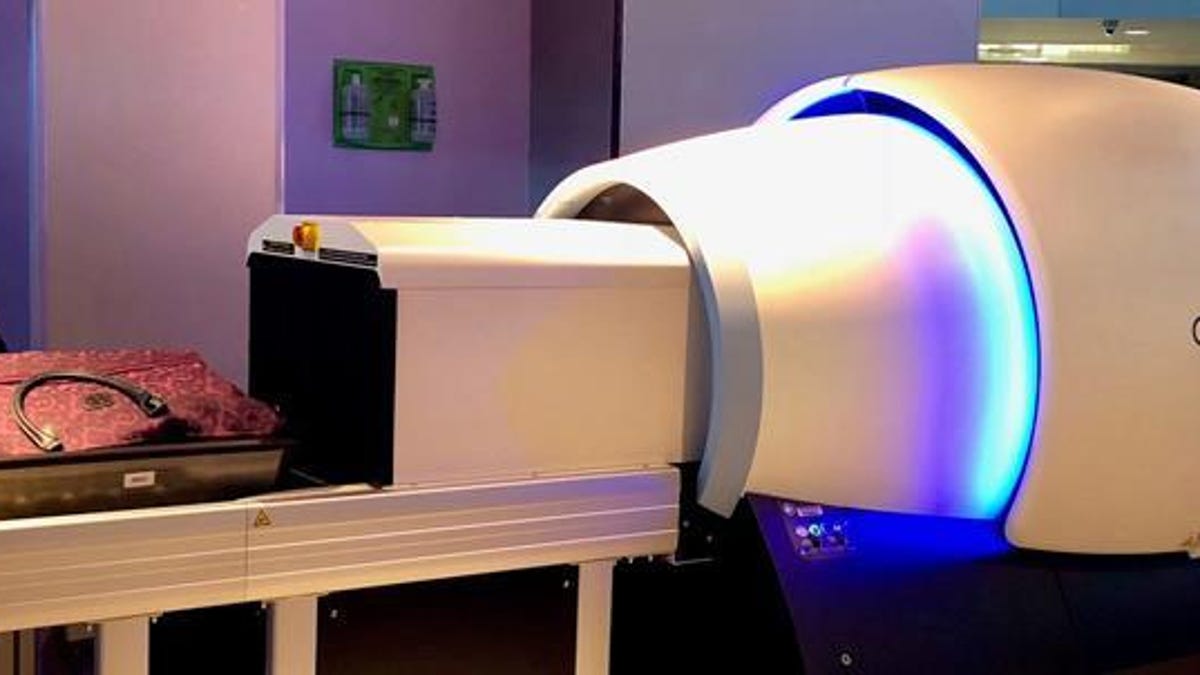TSA's new scanners could mean leaving your laptop, liquids in carry-on
Three cheers for easier security checks.

These scanners may make for a safer (and easier) security check at airports.
Going through airport security may soon become less miserable, thanks to the rollout of new CT scanners at checkpoints.
The Transportation Security Administration (TSA) on Monday said it was installing CT scanners at 15 US airports, and will roll out more units to other airports in the coming months.
The administration plans to have up to 40 CT scanners at airports by the end of the year, as well as 16 at federal testing facilities. By the end of 2019, the TSA says there will be more than 145 scanners at airports nationwide.
"Use of CT technology substantially improves TSA's threat detection capability at the checkpoint," TSA Administrator David Pekoske said in a release.
The CT technology is similar to what's used in the medical field. The X-ray scanning equipment uses algorithms to detect explosives and other threatening materials by creating 3D images, which can be rotated 360 degrees to get a better view. Current TSA screening tech for carry-ons uses 2D images.
The TSA first tested CT scanners in 2017 at Phoenix Sky Harbor International Airport and Boston's Logan International Airport. It also placed a scanner at John F. Kennedy International Airport in New York City earlier this month.
The TSA says CT technology will hopefully mean fewer bag checks. Passengers will also likely be allowed to keep their laptops and liquids in their carry-on bags.
The first 15 airports receiving the units include:
- Baltimore-Washington International Airport (BWI)
- Chicago O'Hare International Airport (ORD)
- Cincinnati/Northern Kentucky International Airport (CVG)
- Houston Hobby Airport (HOU)
- Indianapolis International Airport (IND)
- John F. Kennedy International Airport (JFK)
- Boston Logan International Airport (BOS)
- Los Angeles International Airport (LAX)
- McCarran International Airport (LAS)
- Oakland International Airport (OAK)
- Philadelphia International Airport (PHL)
- Phoenix Sky Harbor International Airport (PHX)
- San Diego International Airport (SAN)
- St. Louis Lambert International Airport (STL)
- Washington-Dulles International Airport (IAD)

